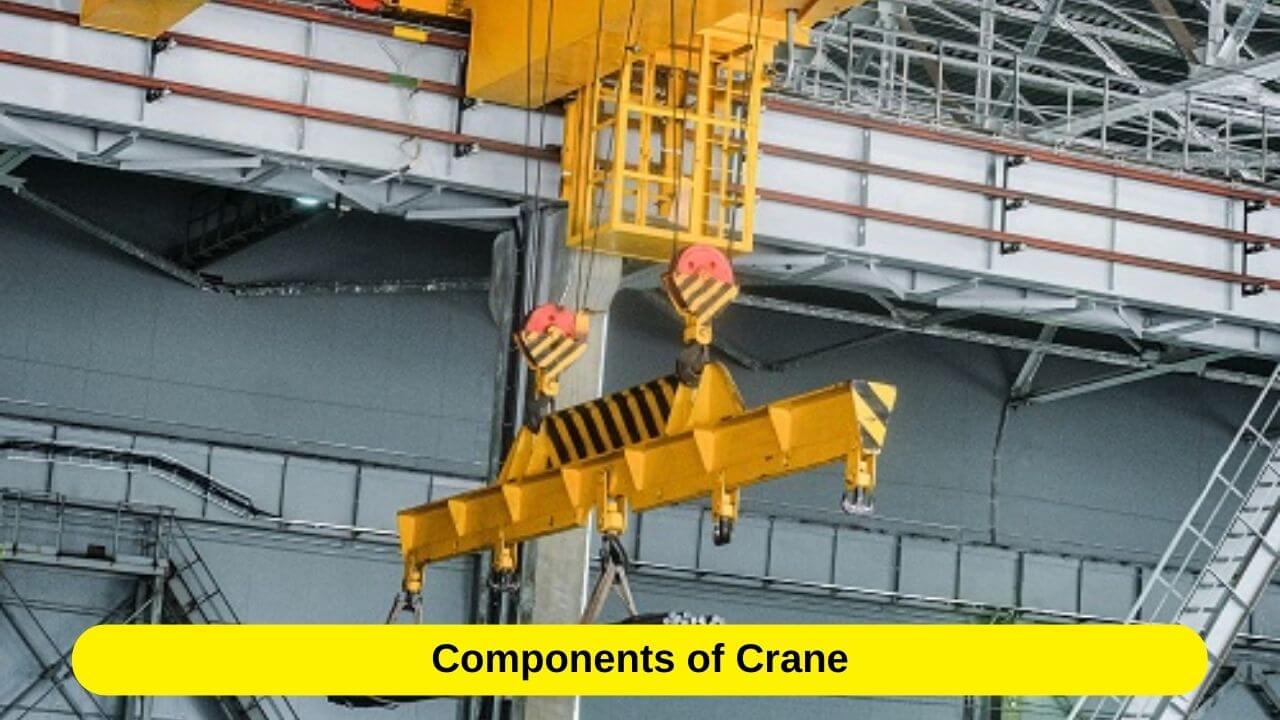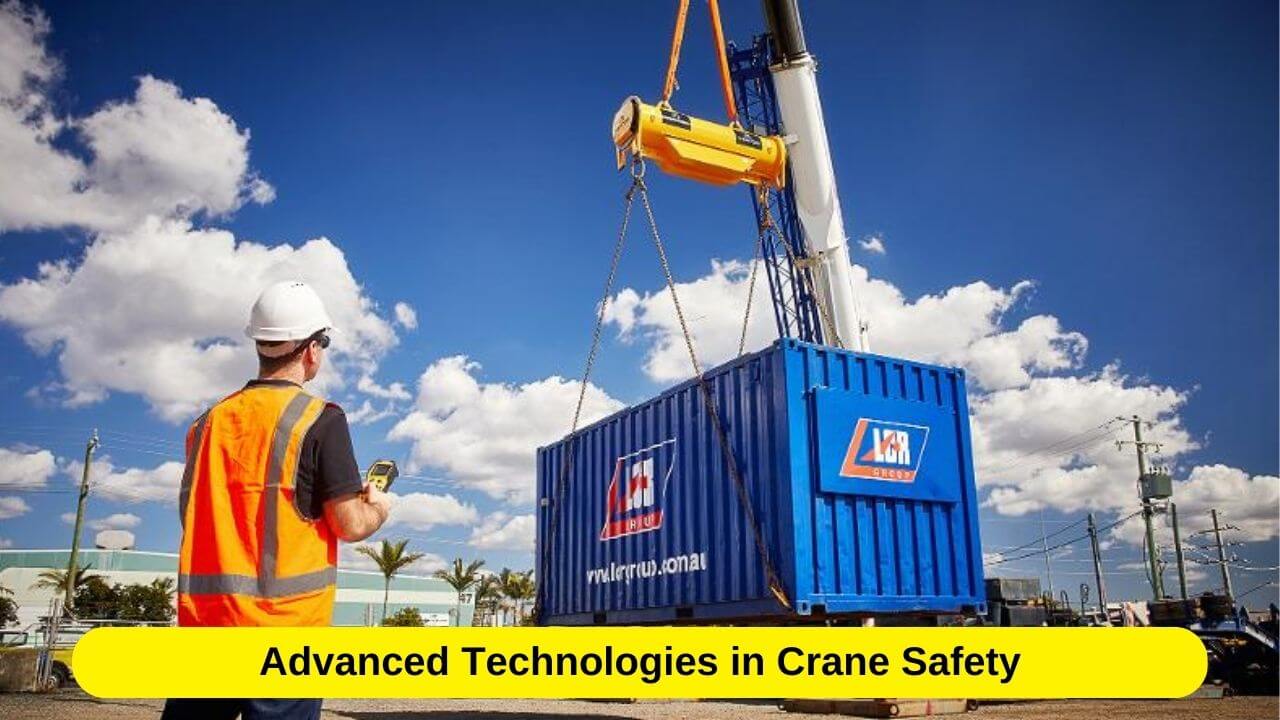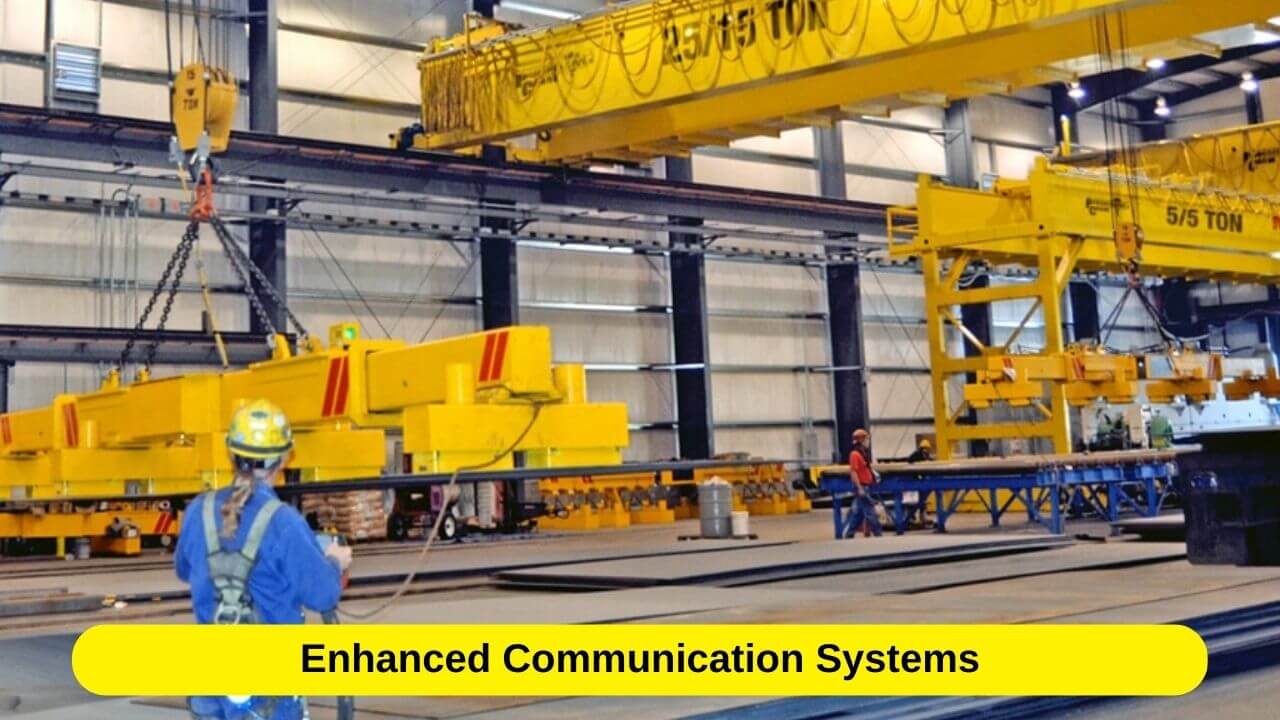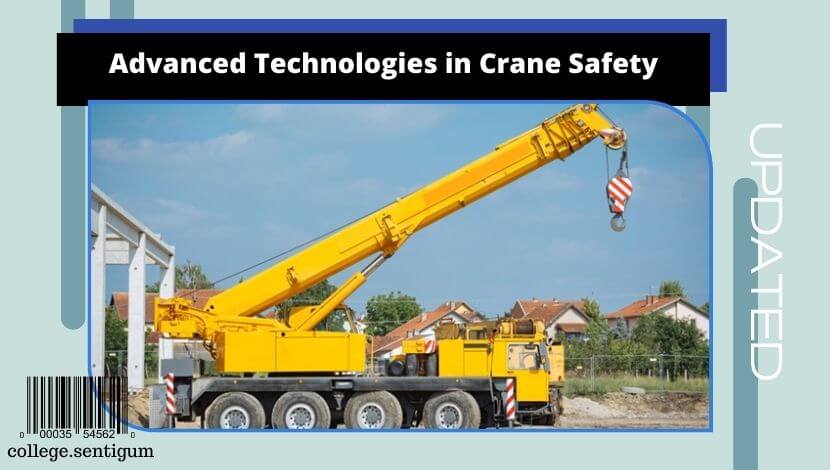Advanced Technologies in Crane Safety – A crane is a type of mechanical lifting device used to move heavy loads vertically and horizontally.
It typically consists of a hoist, ropes or chains, a boom or jib, and a supporting structure. Cranes are commonly used in construction sites, manufacturing facilities, ports, and other industrial settings.
Cranes come in various types and configurations to suit different lifting requirements.
Some common types of cranes include tower cranes, mobile cranes, overhead cranes, crawler cranes, and gantry cranes.
Overall, cranes are indispensable tools for lifting and moving heavy objects in construction, industry, and other sectors.
Components of Crane

The basic components of a crane include:
Hoist
The hoist is responsible for lifting and lowering the load. It consists of a motor, drum, and a system of ropes or chains that are wound around the drum.
The load is attached to a hook or lifting attachment that is suspended from the hoist.
Boom or Jib
The boom or jib is an inclined or horizontal beam that extends from the crane’s main structure.
It provides the reach and height necessary to move the load to the desired location.
Cranes can have different types of booms, such as telescopic booms that can extend and retract, or lattice booms made up of interconnected steel sections.
Supporting Structure
The supporting structure of a crane includes the main frame, base, and outriggers.
It provides stability and strength to the crane, ensuring that it can safely lift and move heavy loads.
Some cranes, such as tower cranes, are anchored to the ground, while others, like mobile cranes, have wheels or tracks for mobility.
Controls and Operator Cabin
Cranes are operated by skilled operators who control the movement of the load and the crane itself.
The operator cabin is where the controls are located, allowing the operator to maneuver the crane, hoist the load, and ensure safe operations.
Modern cranes may also have advanced control systems and computer interfaces to enhance safety and precision.
Read More: The Future of 3D Printing in Heavy Equipment Manufacturing
Advanced Technologies in Crane Safety

Crane safety is of paramount importance in the construction and industrial sectors to prevent accidents, ensure worker safety, and protect valuable equipment and materials.
Advanced technologies have been developed and implemented to enhance crane safety, offering improved control, monitoring, and risk mitigation.
Here are some examples of advanced technologies used in crane safety:
Anti-Collision Systems
These systems utilize sensors, cameras, and advanced algorithms to detect potential collisions between cranes, structures, or other equipment on the worksite.
They provide real-time alerts to operators, helping them avoid accidents and improve overall site safety.
Load Moment Indicators (LMIs)
LMIs are electronic systems that monitor the crane’s load capacity in real-time.
They use sensors to measure the load on the crane’s boom and calculate the safe working range based on the crane’s configuration.
LMIs provide visual and audible warnings to operators when the crane approaches its load limits, preventing overloading and tip-overs.
Remote Control and Automation
Remote control and automation technologies enable operators to control cranes from a safe distance or from a centralized control room.
This reduces the risk of accidents caused by human error and improves safety in hazardous or hard-to-reach areas.
Proximity Sensors
Proximity sensors are used to detect the presence of objects or personnel within the crane’s operating range.
They can trigger alarms or automatically stop crane movements when someone enters a danger zone, preventing collisions and safeguarding workers.
Real-Time Monitoring and Telemetry
Advanced telemetry systems collect and transmit real-time data from various crane components, including load, speed, angle, and stability.
This information is analyzed to identify potential safety risks, monitor crane health, and enable predictive maintenance, reducing the chances of equipment failure and accidents.
Video Surveillance and Imaging
Cameras and imaging technologies installed on cranes provide operators with a comprehensive view of the worksite, even in blind spots.
Video feeds can be displayed in the operator’s cabin or remotely, aiding situational awareness and minimizing potential hazards.
Augmented Reality (AR) and Virtual Reality (VR)
AR and VR technologies are used for training crane operators and simulating complex lifting scenarios.
They provide a realistic virtual environment where operators can practice crane operations, enhancing their skills and decision-making abilities without exposing them to actual risks.
Advanced Telematics and GPS
Telematics systems combined with GPS tracking allow for real-time monitoring of crane locations, routes, and performance.
This helps optimize crane utilization, plan efficient routes, and ensure adherence to safety protocols.
Enhanced Communication Systems

Improved communication systems, such as two-way radios, hands-free headsets, and intercoms, enable seamless communication between crane operators, signalers, and ground personnel.
Clear and efficient communication is crucial for safe crane operations, especially in noisy and complex worksites.
These advanced technologies contribute to crane safety by providing operators with enhanced control, early warning systems, improved situational awareness, and real-time monitoring capabilities.
By integrating these technologies into crane operations, construction and industrial companies can significantly reduce the risk of accidents and create a safer working environment.
Read More: 9 Tips of Choosing the Right Earthmoving Equipment
Conclusion
In conclusion, cranes are essential machines used in construction, manufacturing, and industrial settings to lift and move heavy loads.
They consist of components such as the hoist, boom or jib, supporting structure, and operator controls. Advanced technologies have been integrated into cranes to enhance safety and efficiency.
Advanced technologies in crane safety include anti-collision systems, load moment indicators, remote control and automation, proximity sensors, real-time monitoring and telemetry, video surveillance and imaging, augmented reality and virtual reality, advanced telematics and GPS, and enhanced communication systems.
By incorporating these advanced technologies, companies can significantly improve crane safety by providing operators with better control, real-time monitoring, early warning systems, and enhanced situational awareness.
This reduces the risk of accidents, protects workers, and prevents damage to equipment and materials.
Cranes continue to evolve with the integration of advanced technologies, allowing for safer and more efficient lifting operations.
As technology advances further, we can expect continuous improvements in crane safety, contributing to a safer working environment and increased productivity in various industries.
